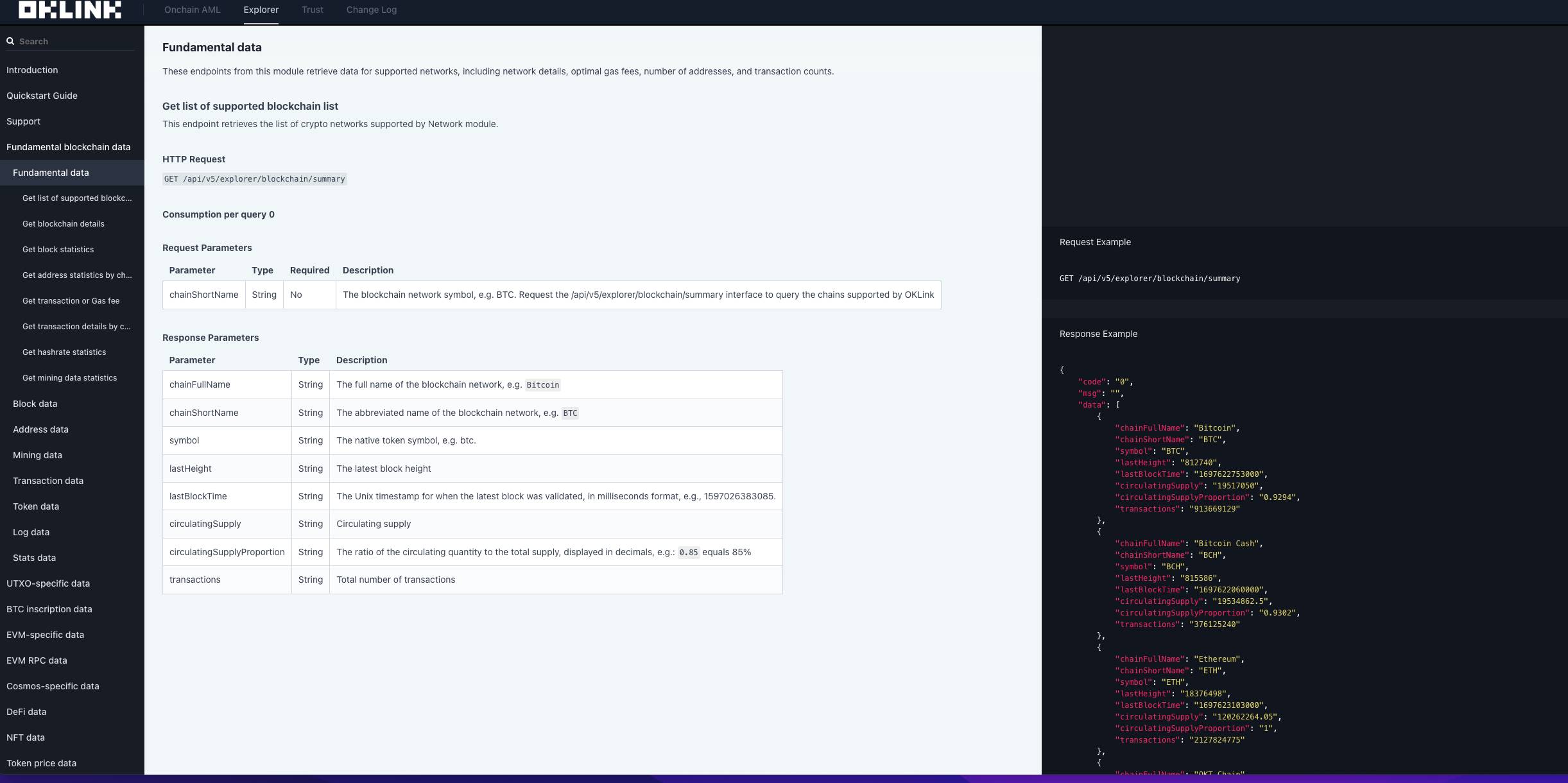API will accompany the development and maturity of these applications, making on-chain data ubiquitous in the Web3 world.
Over 40 years ago, in the early development of computer science, the first APIs (Application Programming Interfaces) emerged to enable data sharing and exchange between different applications. With the popularity of the internet and cloud computing, APIs gradually became omnipresent.
Today, in the Web3 field, as most projects and organizations begin to focus on data and application innovation, APIs are becoming increasingly important. In a conversation with Victor, the product manager of OKLink from OK Blockchain, he stated, "Whether it's a blockchain explorer or an on-chain data service provider, APIs are indispensable."
1. Why are APIs "indispensable"?
More and more people are trying to integrate AI products like ChatGPT into their daily work routines for brainstorming, summarizing text, retrieving translations, or writing emails. All of this relies on APIs: like an "amplifier for AI technology," APIs allow complex AI technologies to be quickly integrated into applications by more developers and organizations, making it easier for users to utilize AI, thereby promoting widespread adoption and explosive growth of technology.
From this perspective, many of the AI applications we see today are actually recreations based on APIs. After all, not all organizations have the capability to research from scratch, but with APIs, everyone has the opportunity to participate in the exploration and practice of more AI applications.
Domestic and international giants like OpenAI, Microsoft, Google, Amazon, and Baidu have now opened up a wealth of artificial intelligence API interfaces and are engaged in fierce competition around APIs. Because behind APIs is the ecosystem: whoever's API can be chosen and used by more organizations and developers will have a greater advantage in future competition.
In the Web3 world, APIs cannot be ignored, especially in the field of Web3 data. Although on-chain data is theoretically open, transparent, and accessible to everyone, it is often difficult to obtain directly. This is especially true when applications like wallets or NFTs require data from multiple blockchain networks, as the data structures and output formats can vary, and they must meet different API interface specifications for repeated data calls, making the workload enormous and complex.
However, for most Dapp and crypto application developers, it is essential to call on-chain data extensively when building product frontends and providing services. From setting up nodes to data filtering and successfully obtaining the required data, each step requires a significant amount of time. If there are useful APIs that can solve the above problems, it will undoubtedly free users and developers from the vast amounts of on-chain data and address many data challenges faced by enterprises and brands entering the Web3 market. APIs can be seen as empowering technologies hidden beneath the surface of the blockchain that truly drive the construction of the Web3 ecosystem.
Today, many organizations providing blockchain data API services are emerging in the Web3 market, primarily consisting of blockchain explorers and on-chain data service providers. Taking OKLink's OpenAPI as an example, it currently supports block data from over 40 mainstream public chains and provides token price data from over 200 blockchain networks, covering more than 7 million tokens and NFTs, as well as comprehensive data on popular protocols including runes, BRC20, and ARC20. "More importantly, we adopt an integrated API interface design. Users only need to use one API to obtain all data from over 40 chains in a one-stop manner," Victor said.

2. What is the use of data APIs in the Web3 field?
After obtaining on-chain data through APIs, what can we actually do with it? Many people are unclear. In fact, this data is playing a role in numerous public chains, wallets, Dapps, and security-related Web3 projects and platforms.
Recently, with the popularity of meme narratives, Sui, as the hottest L1 public chain, has also attracted widespread attention. If a wallet wants to integrate Sui into its product and support data queries and retrieval for popular meme coins, what should it do?
The most direct way is, of course, to set up nodes to obtain Sui chain data, but this incurs costs related to building nodes, synchronizing blocks, data storage, and maintenance. In contrast, leveraging the API services provided by OKLink is a lighter and more efficient choice. Developers can quickly obtain data across multiple dimensions such as transactions, addresses, and tokens through simple API calls, and can track and visualize transaction data for specific wallet addresses to meet user market demands.
Media or on-chain analysts can also obtain data through APIs and analyze specific data dimensions based on their needs, thereby obtaining more accurate and reliable on-chain information for their professional work and investment decisions. Various Web3 markets and platforms can utilize blockchain data APIs to obtain and update on-chain data in real-time and present it visually on their platform frontends. Therefore, even though we may not always directly perceive the existence of on-chain data APIs, we have, to some extent, already used or come into contact with related products and services.
In the future, more and more brands and enterprises will attempt to build Web3 applications or platforms, whether starting from scratch or upgrading existing technologies. Using blockchain data APIs will make these tasks simpler. And APIs will accompany the development and maturity of these applications, making on-chain data ubiquitous in the Web3 world.
免责声明:本文章仅代表作者个人观点,不代表本平台的立场和观点。本文章仅供信息分享,不构成对任何人的任何投资建议。用户与作者之间的任何争议,与本平台无关。如网页中刊载的文章或图片涉及侵权,请提供相关的权利证明和身份证明发送邮件到support@aicoin.com,本平台相关工作人员将会进行核查。




